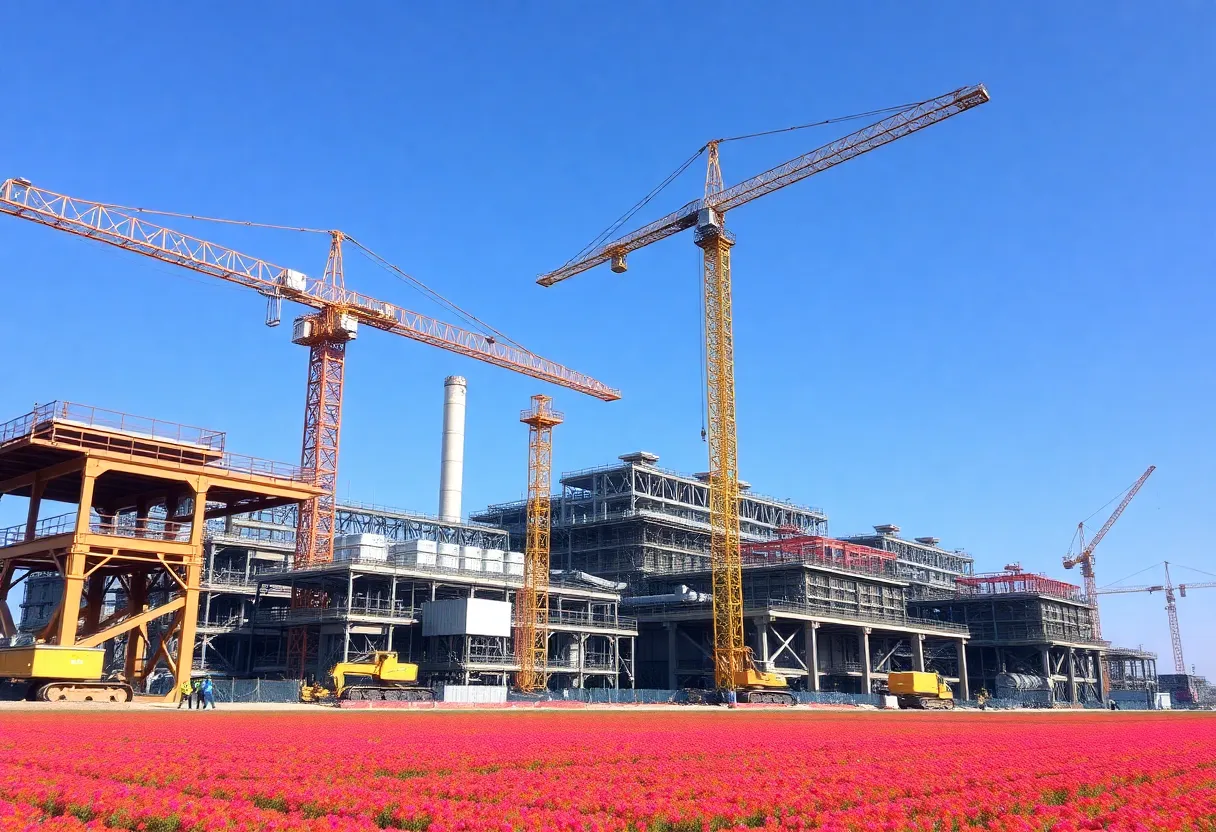News Summary
Texas faces significant infrastructure challenges as its population booms. The recent report highlights troubling grades in essential sectors like levees and broadband access. While some areas perform well, urgent improvements are needed to address safety and reliability concerns. Princeton implements a moratorium on new residential constructions to devise a comprehensive infrastructure plan, emphasizing collaboration and funding solutions for future growth. The state must act swiftly to maintain its economic status and ensure sustainability.
Texas is facing pressing infrastructure challenges as highlighted in the recently released 2025 Texas Infrastructure Report Card. As the state experiences a surge in population growth and an expanding economy, the existing infrastructure is under significant strain, necessitating immediate investments and innovative solutions.
The report reveals a mixed assessment of Texas’ infrastructure, with apparent strengths in areas such as aviation and bridges, while critical components like levees, drinking water, and wastewater systems have received alarming scores. Levees were graded a D-, underlining Texas’ vulnerability to severe weather events like hurricanes and flooding. These systems protect around 1.5 million residents and safeguard properties valued at approximately $248 billion. The low score raises serious public safety concerns.
Additionally, Texas ports earned a C+ grade, indicating they are vital for economic activity but require enhancements to efficiently accommodate increasing cargo volumes and larger vessels. Stormwater infrastructure received a C- rating, highlighting the need for upgrades, particularly in Southeast Texas, which is frequently affected by heavy rainfall. The energy sector rated a C, grappling with regulatory hurdles, uncertainty in the market, and adverse effects from extreme weather.
A concerning D+ was assigned to broadband infrastructure, illuminating a significant digital divide impacting nearly 25% of the rural population in Texas. This deficiency restricts access to virtual learning and economic opportunities, further compounding the need for attention and investment. The report makes clear that addressing these varied infrastructure challenges necessitates increased funding, improved planning, and collaborative innovation between public and private sectors.
As a direct response to its critical infrastructure needs, the City of Princeton, Texas, has imposed a 180-day moratorium on new residential projects—its second such suspension in a row. Princeton has been identified as the third-fastest growing city in the U.S. as of 2023, adding about 1,000 new homes each quarter. The moratorium will allow the city to formulate a comprehensive 10-year plan focused on infrastructure and public safety.
The Texas Association of Builders has expressed concerns regarding the potential consequences of this moratorium, including a possible year-long halt in residential construction, which could further escalate the ongoing housing crisis. The city underscores that the construction freeze includes a concentrated effort to address resident feedback by prioritizing road repairs and effectively managing population growth while enhancing public safety initiatives, including improving police response times.
While the residential moratorium is underway, commercial developments will continue unaffected, indicating an effort to balance economic growth with necessary infrastructure development.
In response to the growing demands on its electricity infrastructure—particularly from emerging sectors like data centers and cryptocurrency mining—Texas anticipates a surge in electricity requirements. The Electric Reliability Council of Texas (ERCOT) forecasts that the energy consumption linked to these industries could reach 10% of the total electricity usage by 2025, with projections to potentially double by 2030. The existing power transmission infrastructure requires substantial upgrades to meet these demands while ensuring reliability across the grid.
Challenges such as electricity congestion and rising costs stem directly from inadequate planning and investment. To tackle these issues, collaborative funding strategies including contributions from ratepayers, charges to large energy consumers, public-private partnerships, and federal funding leverage have been recommended for upcoming projects.
Recent events, particularly vulnerabilities demonstrated during Winter Storm Uri, underline the urgent necessity for Texas to enhance its energy grid in preparation for increased consumption and severe weather occurrences. Without significant improvements and expansions in infrastructure, Texas risks hindering its economic growth and exacerbating energy costs for residents and businesses alike.
Deeper Dive: News & Info About This Topic
- KHOU: 2025 Texas Infrastructure Report
- WFAA: Princeton Pauses Residential Growth
- San Antonio Express-News: Texas Grid and Transmission
- GlobeNewswire: Texas Infrastructure Program Secures Bonds
- Higher Ed Dive: Texas A&M Infrastructure Insights
- Wikipedia: Texas
- Google Search: Texas Infrastructure
- Google Scholar: Texas Infrastructure Report
- Encyclopedia Britannica: Texas
- Google News: Texas Infrastructure
Author: STAFF HERE GEORGETOWN
The GEORGETOWN STAFF WRITER represents the experienced team at HEREgeorgetown.com, your go-to source for actionable local news and information in Georgetown, Williamson County, and beyond. Specializing in "news you can use," we cover essential topics like product reviews for personal and business needs, local business directories, politics, real estate trends, neighborhood insights, and state news affecting the area—with deep expertise drawn from years of dedicated reporting and strong community input, including local press releases and business updates. We deliver top reporting on high-value events such as the Red Poppy Festival, Georgetown Swirl, and Christmas Stroll. Our coverage extends to key organizations like the Georgetown Chamber of Commerce and the Downtown Georgetown Association, plus leading businesses in manufacturing and tourism that power the local economy such as local wineries and historic downtown shops. As part of the broader HERE network, including HEREaustin.com, HEREcollegestation.com, HEREdallas.com, HEREhouston.com, HEREgeorgetown.com, and HEREsanantonio.com, we provide comprehensive, credible insights into Texas's dynamic landscape.






